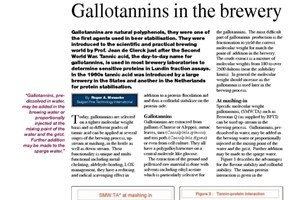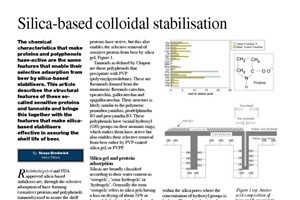Collections
Library
Browse and search the IBD's collection of technical articles and videos
 IBD Membership Required
IBD Membership Required
Beer stabilisation technology
By: Chandra Gopal, Mustafa Rehmanji
01/06/2006
It is said “people drink beer with their eyes”. An important index of beer stability is the visual appearance of the product. With the exception of a few well known examples such as weissbier, consumers associate a star-bright product as a mark of freshness.
 IBD Membership Required
IBD Membership Required
The use of clarification aids
By: Brian Evans
01/06/2006
At the end of primary fermentation beer contains large quantities of yeast and suspended protein/polyphenol particles. The techniques used to remove these are filtration, centrifugation and, for traditional cask ale, sedimentation under gravity.
 IBD Membership Required
IBD Membership Required
Gallotannins in the brewery
By: Roger A. Mussche
01/06/2006
Gallotannins are natural polyphenols, they were one of the first agents used in beer stabilisation. They were introduced to the scientific and practical brewing world by Prof. Jean de Clerck just after the Second World War. Tannic acid, the day-to-day name for gallotannins, is used in most brewery laboratories to determine sensitive proteins in Lundin fraction assays. In the 1960s tannic acid was introduced by a large brewery in the States and another in the Netherlands for protein stabilisation.
 IBD Membership Required
IBD Membership Required
Silica-based colloidal stabilisation
By: Sonya Broderick
01/06/2006
The chemical characteristics that make proteins and polyphenols haze-active are the same features that enable their selective adsorption from beer by silica-based stabilisers. This article describes the structural features of these socalled sensitive proteins and tannoids and brings this together with the features that make silicabased stabilisers effective in assuring the shelf life of beer.
